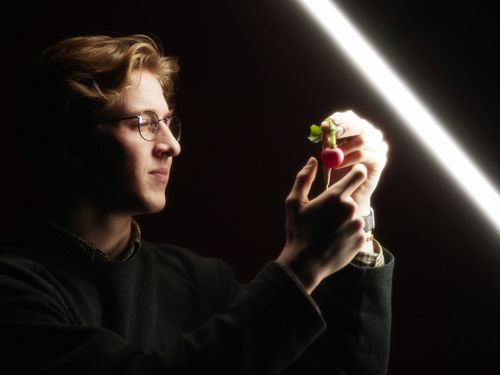Iowa State senior Jacob Friedrich is researching how producers can optimize hydroponic greenhouse gardening. He says what he’s learning will help feed the world.
Good crops require a good climate to thrive. Or at least they used to, before hydroponic greenhouse gardening began allowing growers to artificially control some natural elements. Today, researchers like Iowa State senior Jacob Friedrich are working to expand that control by identifying optimum levels of everything from nutrients to light. He says what he’s learning will help feed the world.
A growing passion
Jacob learned to love gardening on his grandparents’ farm in Cylinder, Iowa. Along with row crops like corn and soybeans, they also planted a large vegetable garden. Watching, and later helping, in the garden nourished Jacob’s passion to make a difference both for farmers and families.
“I started in engineering at Iowa State, but my love of growing food came back to me, so I switched majors to horticulture and global resource systems,” Jacob says. “I care about food production for both those who are food insecure and those who grow it. I want to be part of the solution. The great thing about hydroponic growing is it can provide year-round fresh food anywhere.”

—Jacob Friedrich
Identifying how to grow fresh food anywhere is only part of the equation, though. The other part is making the practice profitable.
“My goal is to learn how to maximize productivity for less cost, because for a solution to be sustainable it has to be profitable,” he says. “It’s the way of the world.”
Let there be (optimum) light
Jacob got the opportunity as an undergraduate student to work alongside Chris Currey, associate professor of horticulture, and graduate student Ryan Niepagen to run his own research focused on the optimum light for growing radishes.
“We began our research into light thinking we could specify the precise amount needed throughout the growing season. But we were growing in a greenhouse, which gets sunlight, too and varies from season to season. So we had to restructure our question to look for the range of light needed.”
Jacob is thrilled to share his findings in a research paper that will include his name.
“Finding the right amount of light will help farmers produce the most yield per energy input. Really, it’s just making more food with less energy, which will help provide greater access to fresh and nutritious food for all people.”



